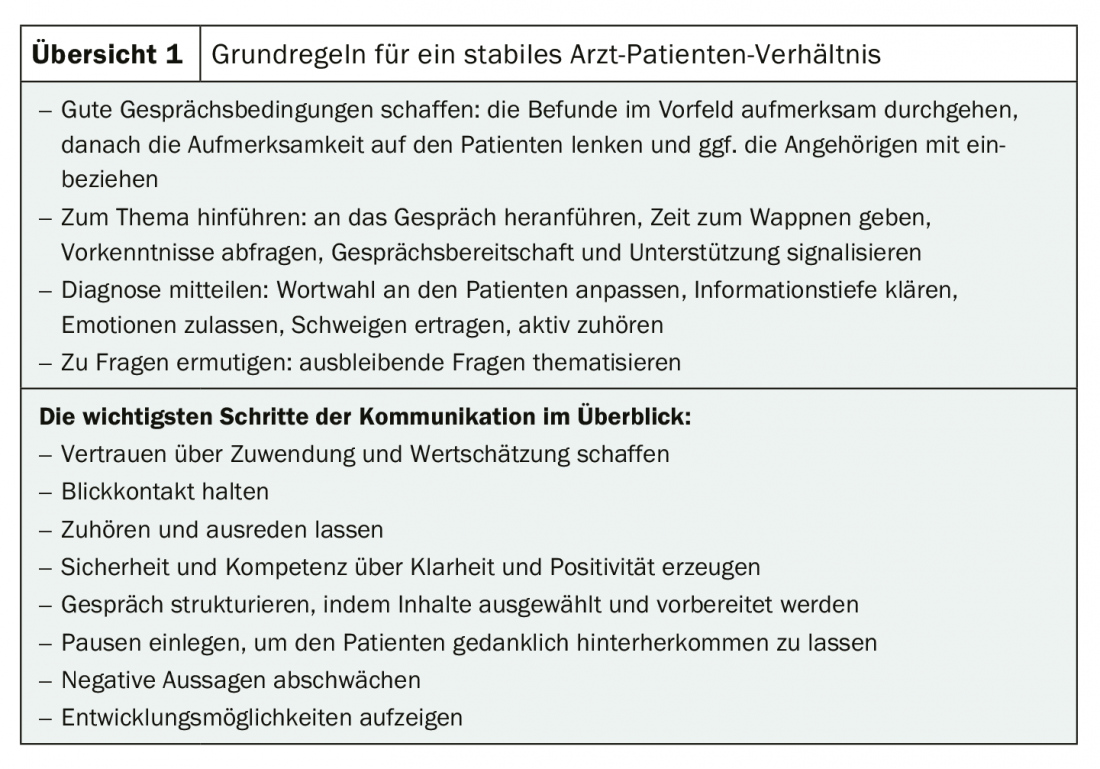The diagnosis of “cancer” catches most people unprepared and leaves behind uncertainties and fears. A gentle conversation adapted to the person affected can strengthen the doctor-patient relationship in the long term. This also has implications for treatment response.
Despite all modern apparatus-based diagnostics and evidence-based therapies, the doctor-patient conversation plays a central role in salutogenesis. Studies show that patient satisfaction and also the success of a therapy depend on the way the physician conducts the conversation. A key concept relevant in this regard is that of adherence – which is also directly influenced by the physician’s ability to communicate. Often, communication skills are even more important than the physician’s clinical experience. Appreciation for the patient plays a central role. This is because this appreciation of the physician leads directly to an increase in the patient’s self-esteem. And that is already attacked per se in this vulnerable phase.
In addition, the absorption capacity is reduced to a minimum in an emotionally stressful situation. Therefore, one should always ask what is remembered from this conversation and whether possibly a professional colleague has already had a similar conversation. What follows is an almost immediate onset of dependence on medical providers, often coupled with frenzied actionism. Now it is important to also pay attention to the quiet tones and to read between the lines. Because the patient wants someone who really understands him and his situation. In particular, topics such as fear of pain, the family situation and the burden on relatives, previous experiences with the disease or later fear of recurrence are frequently addressed in psycho-oncological discussions.
Avoid silent mail
It has proven successful to follow a clear structure with the description of the situation, the setting of priorities, the processing of the illness, the view of the resources up to the clarification of the treatment order in order to support the patient in the best possible way. In any doctor-patient communication, the problem of “silence post loss” can occur: There can be a big difference between what the doctor means and what he says, and one should be aware of this. What the patient hears and what he actually understands may be quite different from the initial message. Therefore, it is not only sensible but imperative to limit oneself to a few relevant pieces of information and to be as clear as possible when conveying the message.
InFo ONCOLOGY & HEMATOLOGY 2019; 7(5): 26.












